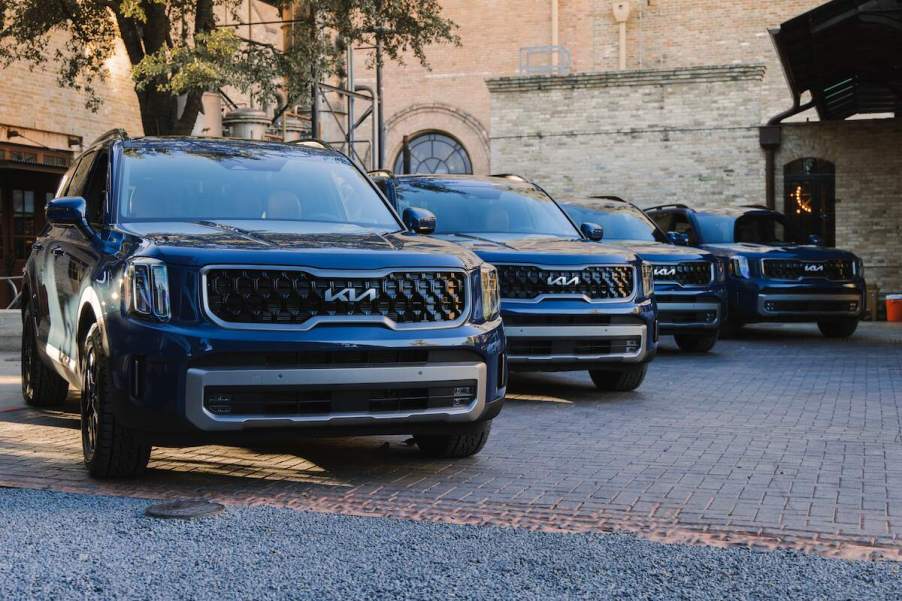
2 Reasons to Avoid Buying an SUV and 2 Reasons to Buy One
The rise of SUVs is inescapable, and there are plenty of affordable options with all types of powertrains. There might be an SUV for every lifestyle, but are they truly suitable for every driver? Let’s go over a few reasons why you might (or might not) want to buy an SUV.

Don’t buy an SUV if you prioritize fuel economy
While there are some SUVs that are relatively fuel-efficient, bigger models consume a lot of gas quickly. For example, the Lincoln Navigator might be roomy, but it only earns an estimated 17/23 mpg city/highway. Those numbers are actually considered above average for the segment.
Even smaller SUVs with better fuel economy ratings are naturally less efficient because of their higher curb weights. You can offset this by buying a hybrid SUV, though these models will be more expensive. The 2023 Kia Sportage Hybrid is the least thirsty choice, averaging 43 mpg combined city/highway.
Don’t buy an SUV if you want the best driving experience
Because SUVs are heavier than other cars, they typically suffer from numb or heavy handling and lackluster acceleration. Without a low center of gravity, you likely won’t be taking one for a track day any time soon. Luxury SUVs from Mercedes-Benz and BMW are typically more responsive with turbo-charged engine choices.
However, even the most agile SUV will likely have some extra body roll. Compared to large cars, bigger SUVs can also be a hassle to park in crowded spaces.
Buy an SUV for more passenger and cargo space
According to MotorTrend, the spacious accommodations offered by midsize and large SUVs can be a big benefit for many families. Sedans can be skimpy on second-row legroom, and none of them have a third row. While the third row inside most SUVs is usually a relatively tiny space, they provide reasonable comfort for smaller passengers.
However, that doesn’t mean that you can’t find an SUV with great seating space for all riders. Case in point, large SUVs like the Chevy Suburban and Ford Expedition offer over 36 in of rear-row legroom. The Lincoln Navigator has the most spacious third row, albeit at the sacrifice of some storage area.
Still, the Lincoln Navigator has 36 cubic ft of cargo room with every seat in use. The Chevy Suburban boasts over 41 cubes behind the rear row and a maximum cargo capacity close to 145 cubic ft. Even smaller SUVs like the Honda CR-V have over 39 cubic ft of cargo room with all five seats upright.
In contrast, most sedans usually only offer between 15-20 cubes of trunk space. Unless it’s a hatchback model, most sedans also lack the versatility of 60/40 split-folding rear seats. This feature allows SUV drivers to load longer items while still utilizing two of the second-row seats.
Buy an SUV for the added ground clearance
Since sedans sit so low to the ground, their underside is prone to more damage from rocks and other troublesome pieces of debris. SUVs ride higher, allowing for more undercarriage protection and heightened visibility for the driver.
Most SUVs have at least 7 in of ground clearance. Rugged vehicles like the Ford Bronco and Jeep Wrangler offer maximum ground clearances around 11-13 in, depending on the trim and option choices. Unless it’s a subcompact SUV, the majority of SUVs can also be optioned with all-wheel drive.
Most sedans are front-wheel-drive only, though you can still enhance their traction with winter tires. However, combined with the added ground clearance, AWD SUVs are likely the better vehicle to have during harsh winters. While SUVs lack the dynamic body lines and handling of smaller cars, it’s clear that owning one has several convenient perks.


